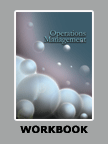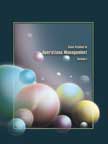Tata Indica: The Making of the Small Car




|
|
ICMR HOME | Case Studies Collection
Case Details:
Case Code : OPER002
Case Length : 08 Pages
Period : 1990 - 2001
Organization : Telco
Pub Date : 2003
Teaching Note : Available
Countries : India
Industry : Automobile
To download Tata Indica: The Making of the Small Car case study (Case Code: OPER002)
click on the button below, and select the case from the list of available cases:

Price:
For delivery in electronic format: Rs. 200;
For delivery through courier (within India): Rs. 200 + Rs. 25 for Shipping & Handling Charges
» Operations Case Studies
» Case Studies Collection
» ICMR HOME
» View Detailed Pricing Info
» How To Order This Case
» Business Case Studies
» Case Studies by Area
» Case Studies by Industry
» Case Studies by Company
Please note:
This case study was compiled from published sources, and is intended to be used as a basis for class discussion. It is not intended to illustrate either effective or ineffective handling of a management situation. Nor is it a primary information source.
|
|
<< Previous
Background Note Contd...
The first commercial vehicle was produced in 1977. In 1983, Telco started
producing heavy commercial vehicles.
|
In 1986, the company rolled out its first light commercial vehicle - TATA 407
that had a completely indigenous design. In 1991, Telco produced indigenously -
designed passenger cars - Tata Sierra and Tata Estate and in the same year it
started its assembly and training plant at Lucknow (Uttar Pradesh). The product
range of the company included passenger cars, heavy commercial vehicles, trucks
and buses (Refer Table II).
By the late 1990s, Telco had emerged as a leading name in commercial vehicles,
passenger vehicles, construction equipment, metal cutting and grinding machines,
industrial shutters, high quality steel, alloy castings and other related
products.
|
|
In 2000, commercial vehicles accounted for 94% of its
gross revenues; vehicle spare parts accounted for 5%; and hire purchase
income, 1%.
|
|
The Story of Indica
In the early 1990s, Telco's Chairman Ratan Tata (Tata), was flirting
with the idea of developing a small car. By mid-1994 a rudimentary
design was in place. In 1995, Telco announced that it planned to build a
car which would be priced close to the Maruti 800, shaped like the Zen,
and spacious as an Ambassador. Producing the new small car - Indica -
represented a different kind of challenge for Telco. Should Tata
succeed, he would change the face of Telco.
As a truck-maker, Telco was so integrated that it even made it own
castings and forgings. |
As an automaker, it would have to focus on the value chain
that stretched between raw materials and after-sales service as well as
assembling the parts into the complete automobile.
For its new venture, Telco outsourced 80% of the components (1,200 of its
1,500-plus parts), from 200-odd vendors. To develop the Indica, Telco had to
combine the learnings from its predecessors with its own unique supply chain
management strategies to ensure a sustainable low-cost platform...
Excerpts >>
|
|



